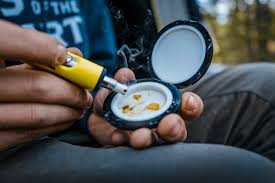Edible Weed, In recent years, the concept of foraging for wild edibles has gained significant traction among food enthusiasts and health-conscious individuals alike. Among the diverse array of wild foods, edible weeds are emerging as a particularly intriguing category. These resilient plants, often considered nuisances by gardeners, are finding their way into gourmet kitchens and health food stores for their surprising flavors and nutritional benefits.
What Are Edible Weeds?
Edible weeds are wild plants that grow abundantly in various environments and are safe to eat. Unlike cultivated vegetables, these plants thrive without human intervention, often in neglected areas like sidewalks, vacant lots, and gardens. Despite their wild nature, many of these weeds have been consumed by cultures around the world for centuries. Their resurgence in popularity is attributed to their impressive nutritional profiles and unique flavors.
Nutritional Benefits
Edible weeds are packed with nutrients, making them a valuable addition to any diet. Many of these plants offer high levels of vitamins, minerals, and antioxidants. For instance:
- Dandelion (Taraxacum officinale): Known for its bitter taste, dandelion leaves are rich in vitamins A, C, and K, as well as calcium, iron, and potassium. The roots can be used in teas, while the leaves are excellent in salads or sautéed.
- Purslane (Portulaca oleracea): This succulent weed is a powerhouse of omega-3 fatty acids, vitamins A and C, and minerals like magnesium and potassium. Its tangy flavor makes it a great addition to salads and soups.
- Lamb’s Quarters (Chenopodium album): Often referred to as wild spinach, lamb’s quarters are a nutrient-dense green packed with vitamins A and C, calcium, and iron. It can be used similarly to spinach in various recipes.
Culinary Uses
Edible weeds are incredibly versatile in the kitchen. Their flavors range from mildly sweet to pleasantly bitter, providing a unique twist to traditional dishes. Here are a few ideas to incorporate edible weeds into your meals:
- Salads: Mix dandelion greens or purslane into your salad for a burst of flavor and added nutrients. These greens pair well with a variety of dressings and other salad ingredients.
- Soups and Stews: Add chopped lamb’s quarters or nettles to soups and stews for extra flavor and texture. Their robust flavors can enhance the complexity of your dish.
- Pesto: Use a combination of edible weeds like dandelion and garlic mustard to create a unique pesto. Blend with nuts, cheese, and olive oil for a fresh twist on a classic condiment.
- Smoothies: Incorporate tender leaves of weeds like purslane into your smoothies for an extra nutrient boost. Their mild taste blends well with fruits and other smoothie ingredients.
Foraging and Safety
While the idea of foraging for edible weeds is exciting, it’s crucial to do so safely. Always ensure you correctly identify the plants you are harvesting and avoid areas that may be contaminated with pesticides or pollutants. Consulting a guide or expert in wild edibles can help you make informed choices and avoid toxic plants.
Conclusion
Edible weeds offer a fascinating glimpse into the world of wild foods, blending sustainability with culinary creativity. Their robust nutritional profiles and distinctive flavors make them an excellent addition to a variety of dishes. As interest in foraging and local food sources continues to grow, edible weeds are likely to become a mainstay in kitchens and gardens alike, showcasing the hidden treasures that nature has to offer.
You Might Also Like These:



